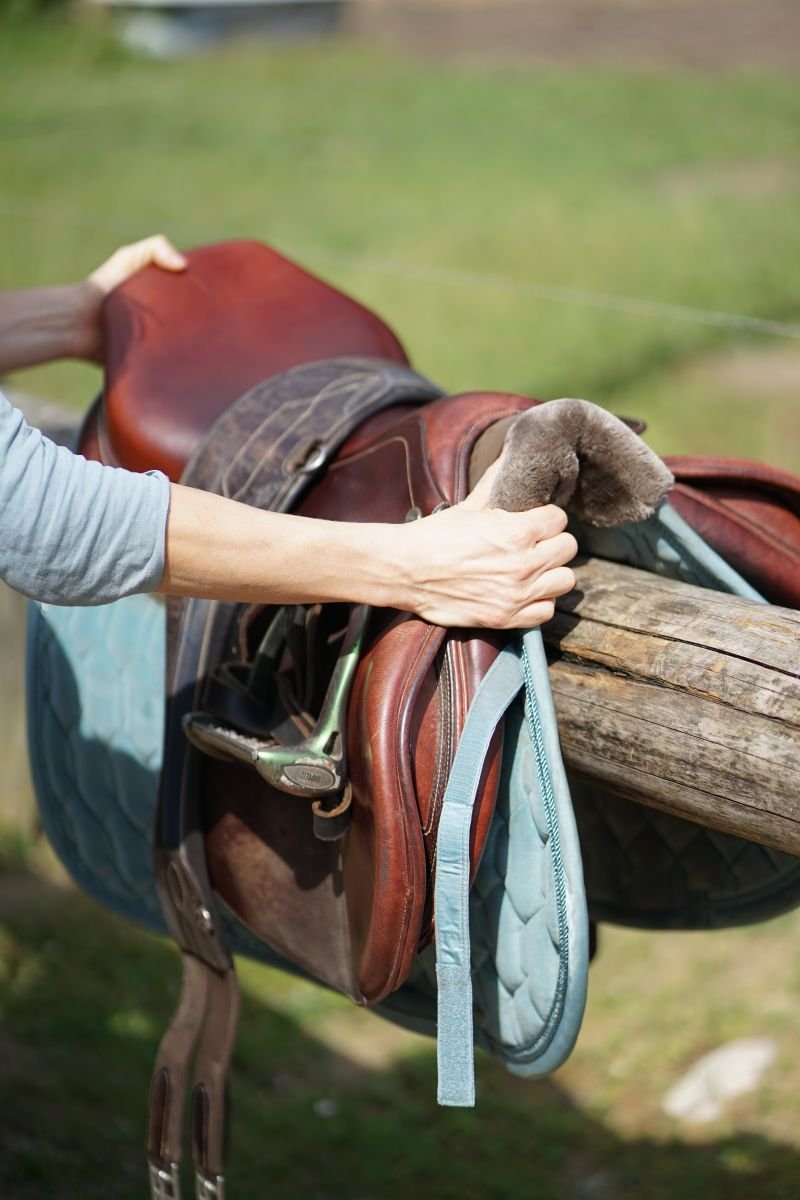Are you seeking to elevate your equestrian experience by selecting the ideal saddle pad? With an abundance of choices available, navigating the myriad of types, materials, and designs can be overwhelming. In this detailed guide, we shall explore the nuances of saddle pads, assisting you in making an informed decision tailored to your horse's needs and your riding style.

Understanding Saddle Pads: An Overview
Saddle pads, often referred to as saddle blankets or numnahs, fulfill a pivotal role in equestrian activities. They serve as a protective barrier between the horse's back and the saddle, absorbing shock, providing comfort, and preventing chafing. Furthermore, saddle pads aid in moisture management, regulate temperature, and even enhance the saddle's fit.

Types of Saddle Pads
Saddle pads can be broadly categorized into several types based on their design, purpose, and materials utilized. Below are the most prevalent varieties:
Dressage Saddle Pads: Typically larger and more contoured in shape to accommodate the elongated flaps of dressage saddles, these pads often feature a high wither design to alleviate pressure on the horse's spine, ensuring a snug fit.
Jumping Saddle Pads: Generally shorter and more compact, these pads are crafted to align with the shorter flaps of jumping saddles. They may incorporate additional padding at the front for enhanced support during jumps.
All-Purpose Saddle Pads: True to their name, these versatile pads cater to various riding disciplines. They strike a harmonious balance between the characteristics of dressage and jumping pads, making them suitable for riders who participate in multiple disciplines.
Western Saddle Pads: Often thicker and constructed from materials that offer superior cushioning, these pads are designed to fit Western saddles, which differ in shape and size from English saddles.
Thermal and Cooling Pads: Engineered to regulate temperature and wick away moisture, these specialized pads are especially beneficial for horses that perspire excessively or work in hot conditions.
Sheepskin Pads: Crafted from natural sheepskin, these pads provide exceptional shock absorption and breathability. They adapt to the horse’s back over time, creating a custom fit.

Choosing the Right Shape and Fit
The shape and fit of a saddle pad are paramount for both the horse's comfort and the rider's performance. Consider the following key aspects:
Wither Clearance: It is crucial to ensure that the saddle pad offers ample wither clearance to prevent pressure on the horse's spine. Pads with a more pronounced contour at the back are ideal for high-withered horses.
Length: The length of the saddle pad should correspond with that of the saddle. A pad that is too short may offer insufficient coverage, whereas one that is excessively long can create bulk and discomfort.
Thickness: The pad's thickness influences the degree of cushioning and shock absorption. Thicker pads may enhance comfort for the horse, yet they can also affect the saddle's fit, making it essential to strike a balance.

Material Considerations
The material of the saddle pad significantly impacts its performance and durability. Here are some common materials utilized in saddle pads:
Cotton: A widely favored option due to its breathability, softness, and ease of cleaning, cotton pads are often employed for everyday riding and come in a variety of colors and patterns.
Fleece: Fleece-lined pads offer additional cushioning and are excellent for moisture management. Their soft texture against the horse's skin helps prevent chafing.
Neoprene: Known for its shock-absorbing capabilities, neoprene pads are water-resistant and simple to clean, making them a pragmatic choice for wet or muddy environments.
Memory Foam: Conforming to the horse's back, memory foam pads provide a custom fit and outstanding shock absorption. These pads are particularly advantageous for horses with sensitive backs.
Gel: Gel pads deliver superior shock absorption and evenly distribute pressure. They are frequently used alongside other materials to enhance overall comfort.

Additional Features to Consider
When selecting a saddle pad, contemplate additional features that can improve both performance and comfort:
Moisture-Wicking: Seek pads with moisture-wicking properties to keep the horse dry and comfortable during rides.
Anti-Slip Technology: Some pads are designed with anti-slip features to prevent movement while riding, ensuring the saddle remains securely in place.
Machine Washable: For convenience, opt for pads that are machine washable to facilitate maintenance.
Customization: Certain manufacturers offer customizable options, allowing you to select colors, patterns, and even include your horse's name.

Conclusion
Selecting the appropriate saddle pad is vital for the comfort of both horse and rider. By comprehending the various types, shapes, materials, and features available, you can make a well-informed decision that meets your specific needs and enriches your equestrian experience. Remember, a well-chosen saddle pad not only safeguards your horse but also contributes to a more pleasurable ride. Whether you are a seasoned rider or a novice, investing in a quality saddle pad is a significant step towards achieving harmony with your horse. Happy riding!